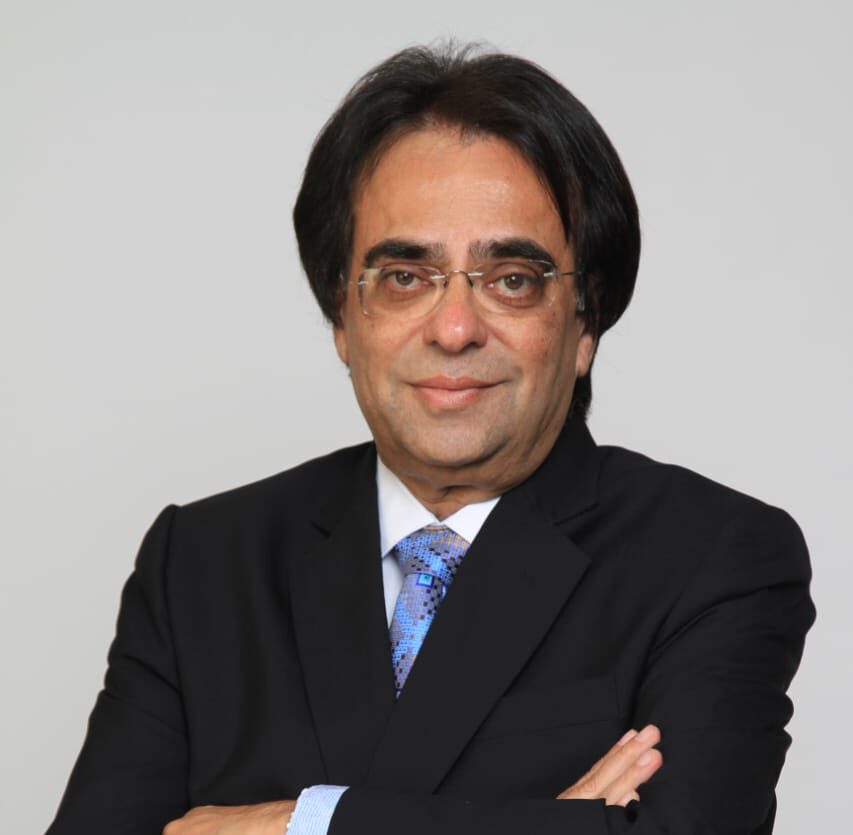

The origin is a village in the district of Bidar, North Karnataka, called KhenyRanjol; a village most certainly not on the global map. Yet, incredible as it may seem, one of its sons chose to lay a landmark corridor that defied all political scuttles and multiple roadblocks over more than a decade and the rest is indeed history.

In an exclusive interview with Business News This Week, Ashok Kheny, Managing Director of Nandi Infrastructure Corridor Enterprise (NICE) talks about his unbelievable journey over the last four decades, where he has become a household name in the IT city of Bengaluru.
Business News This Week: Could you tell us about your earlier ventures before starting NICE?
Ashok Kheny: It was the year 1979 when I started my first Company SAB Engineering and Constructions Inc. and Railway Systems Design Inc. (RSD), in Philadelphia. This was seven years after I set off to the US, in 1972, to do my Master’s degree in Management and Engineering from Worcester Polytechnic, Worcester, Massachusetts. I have always believed and pursued my dreams once convinced, to the point of being considered rebellious. In fact, in 1974, I informed my recruiting Officer in Penn Central (later Conrail, a railway company in the US) that I would quit if I did not rise to the level of Vice-President in five years. And indeed, I quit in five years to float my own company called SAB which later grew to be a force in the infrastructure segment in the United States.
Laying a fibre optic cable network between Washington D.C. and Jacksonville (Florida) spanning some 1,250 km in three months flat, building the first and only people mover transit system using linear induction motors in Detroit, laying the first trans-Atlantic fibre network between New York City and Los Angeles (alongside the railway line), are some of the incredible achievements that we were able to boast of. These were all implemented within seven years of SAB being floated.
Of course, these were not the only projects we implemented. Engineering and construction of the Boston Blue Line Rapid Transit Signal and Communication system, Philadelphia Centre City Rail tunnel, Seattle Transit System, and rehabilitation of Grand Central Station in New York City are some of the other key Infrastructure Projects we completed.
Business News This Week: Were these incredible achievements duly recognised by the US government?
Ashok Kheny: Certainly! I was honoured by President Ronald Reagan in 1987 with the ‘Outstanding Businessman of the Year of a Minority Community Award’.
It is all about credibility. Once you prove your credibility, whichever country it is, trust and business follow automatically.
Business News This Week: What prompted you to start NICE?
Ashok Kheny: It was an incident involving my son that prompted me to sell a portion of my business in the US and return to India. My son one day returned from school with tears in his eyes for having been ragged because he was Indian. I realised, I needed to return home, and work towards making India as efficient and developed like the US. It was only natural then to return to Karnataka where my roots lay. My first project was a bypass road near Hubli-Dharwad city. But given the volume of work I was used to dealing with, this project was too small, prompting me to lay the first bricks on the Bangalore Mysore Infrastructure Corridor (BMIC).
Business News This Week: Could you talk about your experience in implementing this humongous project?
Ashok Kheny: The journey was certainly not easy, fraught with multiple battles and roadblocks that many a time were so draining, physically, financially and emotionally. But given the conviction that we have to make a difference, we ploughed on undaunted, systematically breaking every barrier that came our way, many of which involved legal battles.
The struggles finally paid off when the first phase of the 111 km BMIC Project -the 41 km NICE Peripheral Road and the 9 km Link Road became operational, making easily accessible some of the most remote regions of Bengaluru. We also rehabilitated one village in Sompura using a self-sustained model with all amenities in place including concrete roof houses. We also provided land and facilities to the Bangalore International Exhibition Centre (BIEC) which has been catering to mammoth international exhibitions in the city and has become a landmark of Bengaluru, tying into the global scene.
Business News This Week: The BMIC is now expected to be turned into a regional economic hub with self-contained Townships. Could you elaborate on what is envisaged?
Ashok Kheny: Five self-contained Townships are planned on this Corridor, drawing commercial development into the region, and boosting employment as well as an entrepreneurial opportunities. It will also decongest the city besides augmenting the revenue of the State through the ensuing economic activity.
We also proposed Metro Rail in the median along the Peripheral Road where the line will connect Namma Metro station on Hosur Road, Bannerghatta Road, Kanakapura Road, Mysore Road, Magadi Road and Tumkur Road close to the Bengaluru International Exhibition Centre. The median of the expressway is large enough to hold the pillars of the viaduct without compromising road space. The construction activity will also not hamper the movement of traffic. Parking spaces will be provided at all stations to enable commuters to park and take the Metro.
Business News This Week: Townships and economic zones require supporting infrastructure. Will these be in place?
Ashok Kheny: The BMIC is envisaged with all required civic infrastructure for efficient functioning. The Corridor will come with its own dedicated water distribution system with a capacity to lift two TMC of Cauvery water. Sewage treatment plants will facilitate the use of treated water for non-potable purposes such as gardening and industrial use. Independent electricity generation and distribution with a capacity of 400 MW of power will prevail making the commercial and domestic needs self-reliant in this Corridor. Apart from these, the Corridor will also come with its own telecommunications system and gas pipeline for domestic consumption.
Business News This Week: Since economic zones are envisaged, will each zone cater to a specific sector to make it more efficient?
Ashok Kheny: Absolutely. Five sector-specific townships are planned on the Corridor, each township coming up with commercial and residential spaces relating to the identified sector along with adequate social infrastructure. The five townships will encompass Corporate, Commercial, Industrial, Heritage and Eco-tourism. State-of-the-art workspaces will be constructed in each of these townships that facilitate better productivity and lower carbon emissions.
The Corporate and Commercial townships will draw investments from large multinationals and domestic firms, especially from the knowledge industry. The Industrial Township will serve as a manufacturing hub while the Heritage and Eco-tourism townships will facilitate the development of cottage industries and region-specific businesses. Each of these townships is planned to accommodate a population of more than one lakh with all social infrastructure in place to permit the walk-to-office concept wherever possible. All the townships are also planned to fuse in future expansions.
Business News This Week: Will the interchanges across the Corridor offer any specific facilities to further these economic zones?
Ashok Kheny: The 111-km expressway will have interchanges, grade separators, underpasses, and overpasses making it seamless and signal-free. It will be access-controlled with high security. The expressway, if required, can also be expanded to six lanes from the present four lanes. Theme-based facilities are planned in each of the interchange areas such as Financial City at the Mysore Road interchange area, Sports City at the Magadi Road interchange area, Health City at the Bannerghetta Road interchange area, and Semi-conductor facility at the Electronic City interchange area.
All the facilities offered will be world-class, similar to the Bengaluru International Exhibition Centre at the TumkurRoad interchange area. The interchange areas will also host Logistics Parks, Truck and Bus Terminals, complementing these mini-economic zones and linking seamlessly all the Peripheral Road interchanges.
Business News This Week: What is the current status of this massive project?
Ashok Kheny: We are close to launching the construction work, waiting for the final approval from the State Government. Land acquisition is complete with plans submitted long ago. Once we start, the project will be completed in three years.
Section A of the project is under implementation.
The 41 km of Peripheral Road &9 km of Link Road are under operation and with this entire South Bangalore is relieved from traffic problems.
Regarding development in Interchange areas company has applied to Govt for permission.
Township – Lands are acquired by govt and are yet to transfer to the company to start development at Section ‘A’ of the Project, i.e, 41 km Peripheral Road, 9.1 km of Link Road, 12 km of Expressway, and Township 1.
5 km Expressway has been constructed. Further land has to be given or cleared by govt to complete the balance 7 km.
